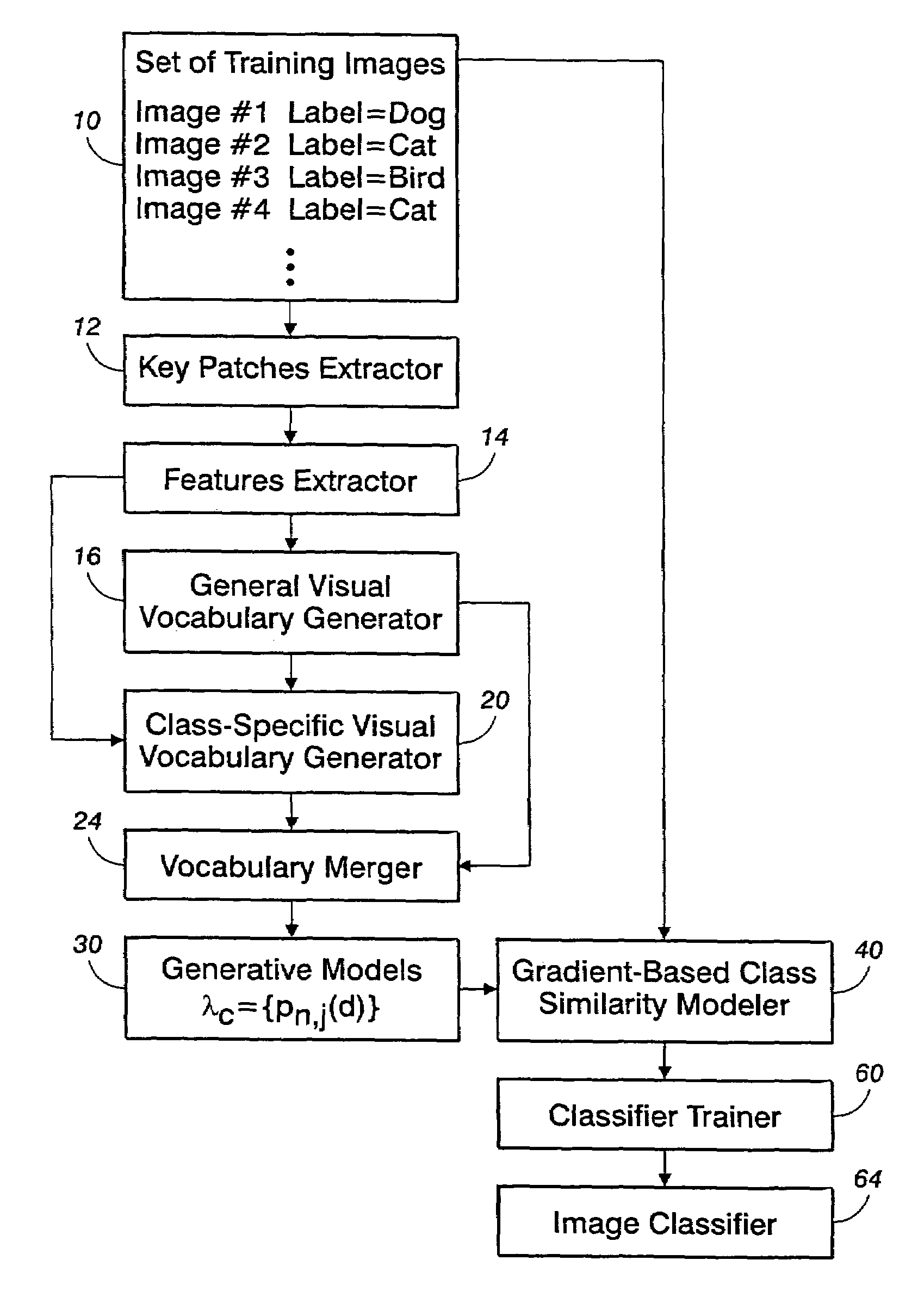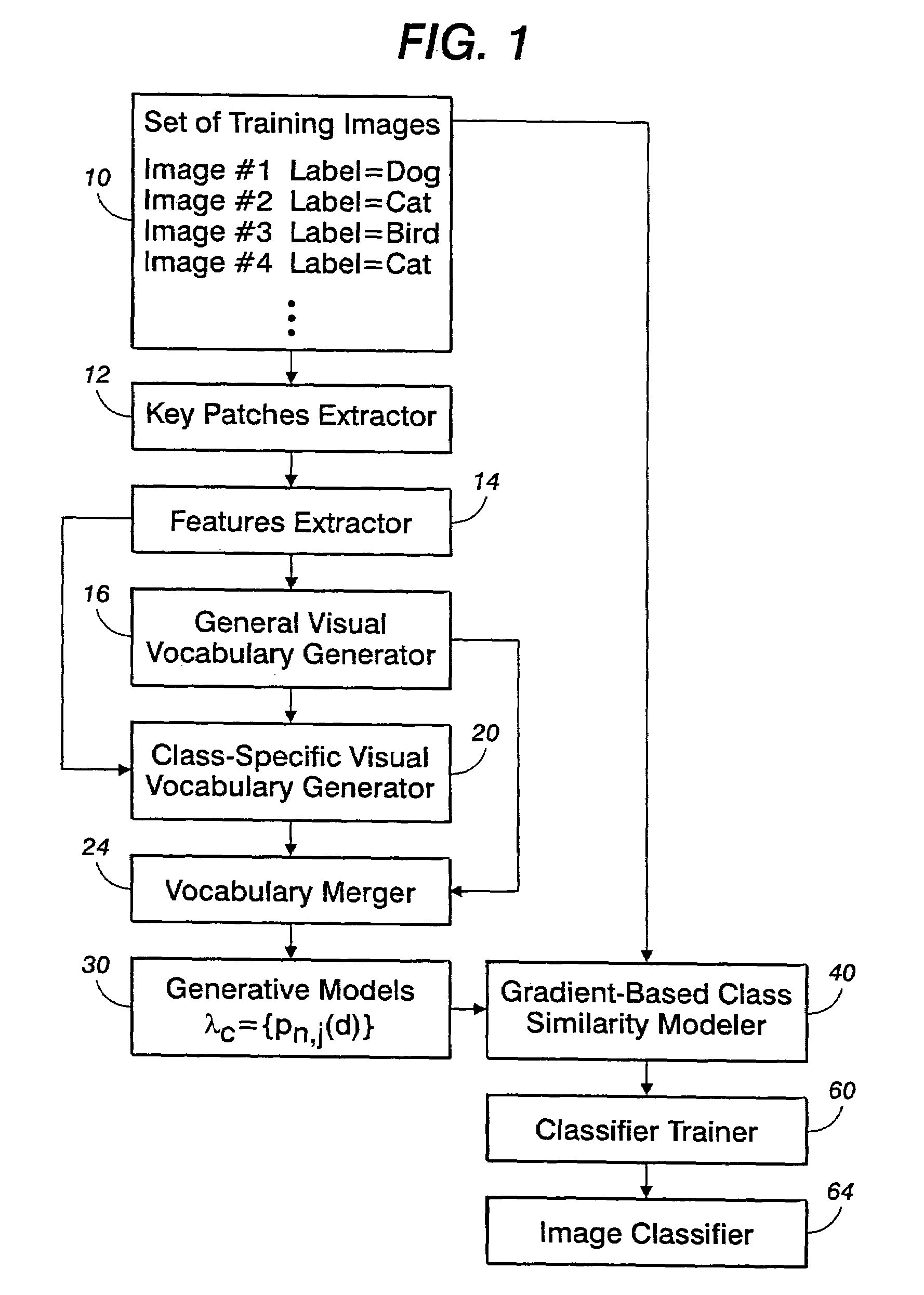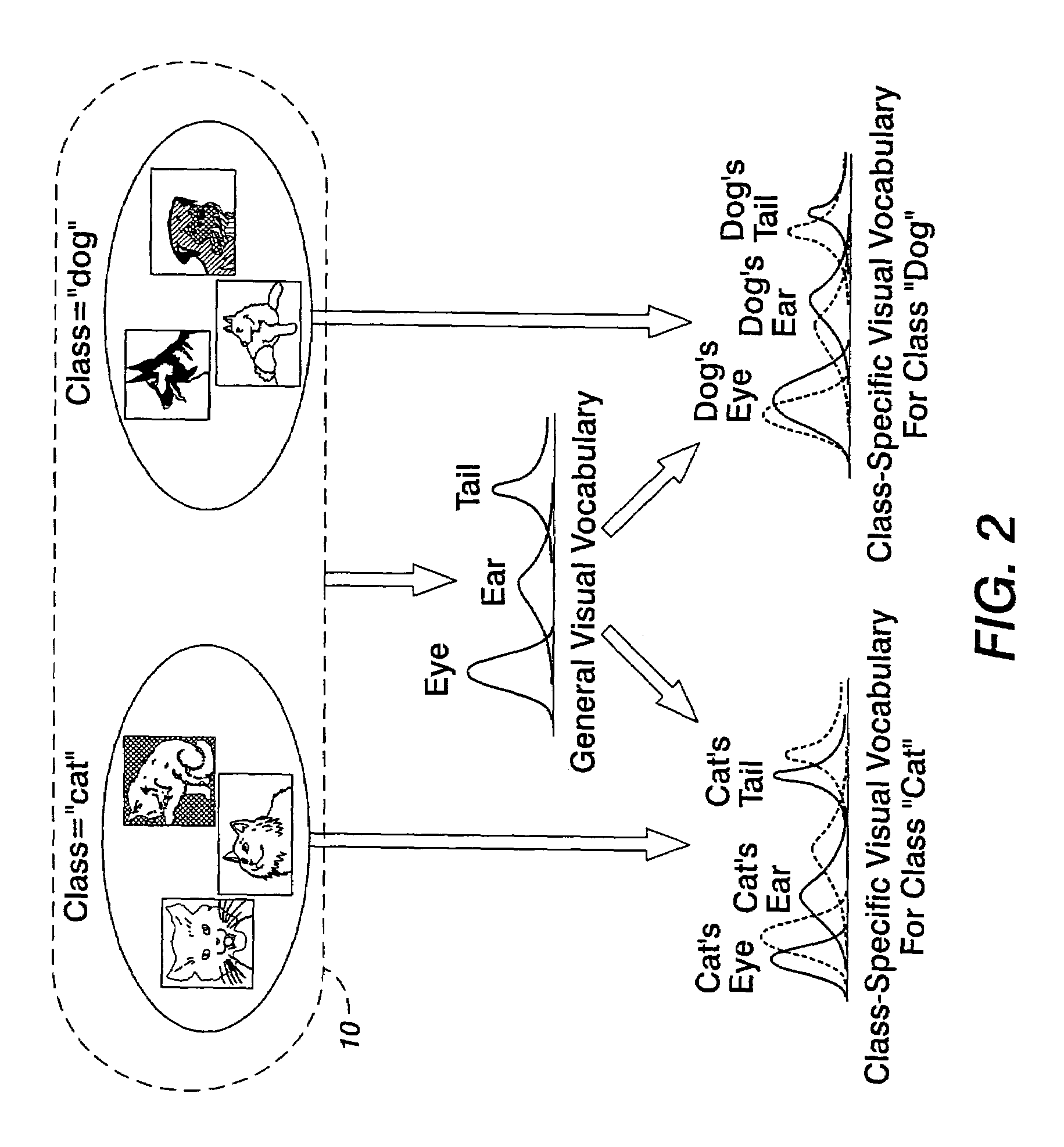Generic visual classification with gradient components-based dimensionality enhancement
a technology of component and dimensionality enhancement, applied in the field of image storage and processing arts, can solve the problems of increasing computational complexity, image not composed of words, and difficulty in computational scaling,
- Summary
- Abstract
- Description
- Claims
- Application Information
AI Technical Summary
Benefits of technology
Problems solved by technology
Method used
Image
Examples
Embodiment Construction
[0017]With reference to FIG. 1, an image classifier training system trains a classifier based on a set of training images 10. The training images can be in any selected format, such as JPEG, GIF, BMP, TIFF, or so forth. If appropriate, an image format converter (not shown in FIG. 1) can be used to convert the training images to a common format. The training images 10 can be black-and-white images, color images, or some combination thereof, and can have a selected resolutions (for example, measured in pixels-per-inch), sizes (for example, measured in horizontal / vertical pixel counts), aspect ratios (for example, measured in horizontal / vertical pixel count ratios), or so forth. The optional format converter (not shown in FIG. 1) may optionally resize or otherwise manipulate parameters of the training images to attain parameter uniformity across the training images. The training images 10 are selected to be representative of image content classes that the trained classifier is intended...
PUM
 Login to View More
Login to View More Abstract
Description
Claims
Application Information
 Login to View More
Login to View More - R&D
- Intellectual Property
- Life Sciences
- Materials
- Tech Scout
- Unparalleled Data Quality
- Higher Quality Content
- 60% Fewer Hallucinations
Browse by: Latest US Patents, China's latest patents, Technical Efficacy Thesaurus, Application Domain, Technology Topic, Popular Technical Reports.
© 2025 PatSnap. All rights reserved.Legal|Privacy policy|Modern Slavery Act Transparency Statement|Sitemap|About US| Contact US: help@patsnap.com



